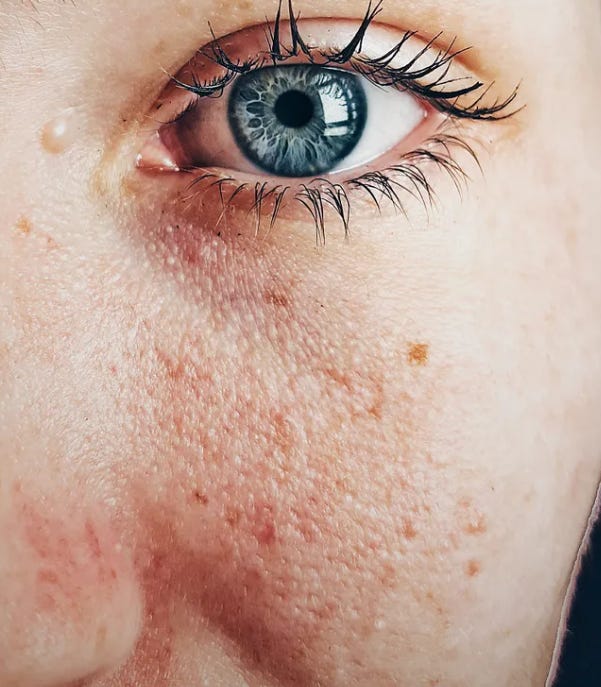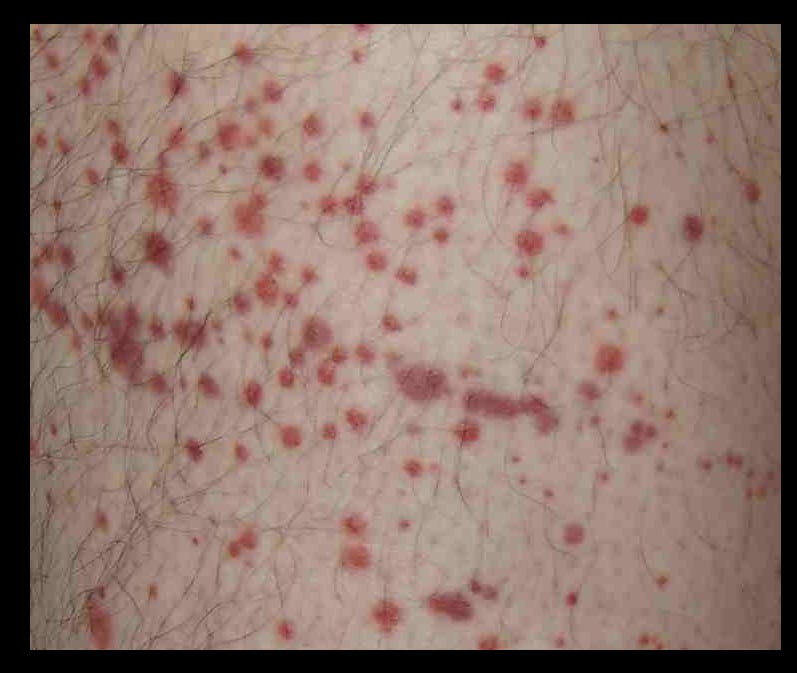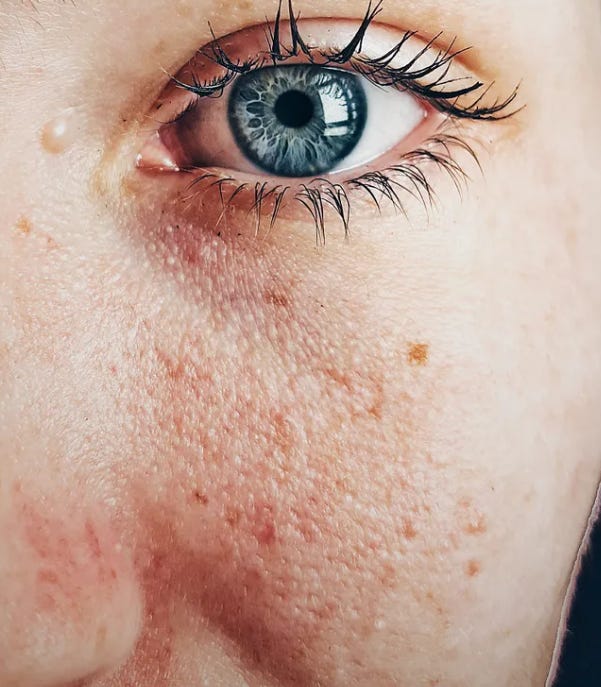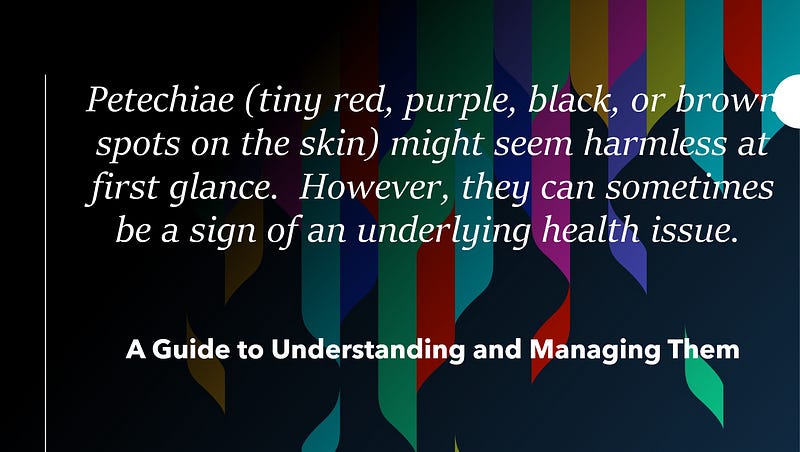6 Steps to Handle Petechiae: A Guide to Understanding and Managing This Skin Symptom
Discover the causes, significance, and practical steps to manage petechiae with a blend of medical insights and easy-to-follow guidance.
Medium readers/writers can read this story for free via my friend link.
I wrote this story differently because subscribers on another platform requested a concise, practical guide on this health condition, avoiding case studies, scientific papers, and technical jargon. To honor their request, I distilled my knowledge, and you can find more details in my previous article.
Petechiae, those tiny red, purple, or brown spots on your skin, might seem harmless at first glance. However, they can sometimes be a sign of an underlying health issue. Understanding what petechiae are, why they occur, and how to address them is crucial for your overall well-being.
Petechiae are small, flat spots caused by bleeding under the skin. They don’t disappear when you press on them and are usually painless. While they can occur due to minor injuries, they can also be a symptom of more serious conditions.
Petechiae can be an early warning sign, giving you a heads-up about potential health concerns. They can indicate infections, platelet disorders (problems with blood clotting), certain medications, or even serious conditions like meningitis or leukemia.
Some readers asked me how common petechiae are. I told them there was no readily available data on the exact number of people affected by petechiae worldwide. This is because petechiae is a symptom, not a disease itself, and can be caused by numerous factors ranging from minor injuries to serious medical conditions.
However, as a seasoned researcher, I can infer that petechiae are relatively common due to the vast research and literature on the topic. The occurrence of petechiae is repeatedly documented in medical reports and studies, highlighting its relevance in clinical practice.
The frequency of petechiae can vary significantly depending on the underlying cause. For instance, they might be more prevalent in individuals with certain medical conditions or those taking specific medications.
While we don’t have precise figures on the global prevalence of petechiae, it is safe to say that it is a widespread phenomenon that can affect people of all ages and backgrounds.
Practical Steps to Address Petechiae

1 — Follow a Healthy Lifestyle
A balanced diet rich in nutrients and antioxidants supports blood vessel health.
Regular exercise improves circulation and strengthens blood vessels.
Quality sleep is essential for healing and overall well-being.
Stress management techniques like rest, fun, meditation, yoga, gardening, or listening to music can reduce stress and inflammation.
Maintaining a healthy weight reduces strain on blood vessels.
Avoiding smoking and excessive alcohol is crucial for vascular health.
2 — Optimize Skin Care
Gentle cleansing, drying, and moisturizing help protect the skin.
Avoid scratching or picking at petechiae to prevent further damage.
Take precautions to avoid skin injuries, especially if you’re prone to them due to a medical condition or medication.
Avoid activities that put excessive pressure on the skin.
3 — Recognize the Symptoms
Be aware of the appearance of petechiae and any accompanying symptoms, such as easy bruising, bleeding, fever, or fatigue.
4 — Understand the Mechanisms
Petechiae occur due to blood leaking from tiny blood vessels (capillaries).
This can be caused by platelet abnormalities, blood vessel damage, or increased capillary fragility.
Understanding these mechanisms helps identify potential causes and risk factors.
5 — Seek Professional Help
Consult a doctor if you notice petechiae without a clear cause or if you have any concerns.
Your doctor may recommend blood tests to assess platelet levels and clotting factors.
Depending on the cause, treatment may involve managing an underlying infection, addressing platelet dysfunction, or treating other contributing conditions.
6 — Monitor After Treatment
Keep an eye on any changes in the appearance, size, or distribution of the petechiae after treatment.
Follow your doctor’s recommendations and attend follow-up appointments.
Seek immediate medical attention if you experience worsening symptoms.
Key Points to Remember
Petechiae are not always a cause for alarm, but they should not be ignored.
Identifying the underlying cause is crucial for appropriate treatment.
A healthy lifestyle and proper skin care can help prevent petechiae.
Consulting a healthcare professional is essential for accurate diagnosis and management.
By being proactive and informed, you can take the necessary steps to address petechiae and protect your health.
Sample Images
Petechiae, or small bruise-like markings, may occur in ITP (Immune thrombocytopenic purpura)

Under the Eyes

Apart from skin, petechiae can also appear on the tongue. The following image is of a person with platelets (platelet count) of 3 G/L (normal: 150–450 G/L) due to ITP

Conclusions and Takeaways
Understanding and addressing petechiae is vital for your overall health. Though often harmless, these tiny spots can sometimes signal deeper health issues that warrant attention.
You can effectively manage this condition by adopting a healthy lifestyle, prioritizing skin care, recognizing symptoms, understanding the underlying mechanisms, seeking professional help, and monitoring after treatment.
Petechiae symptoms remind us of the intricate ways our bodies communicate with us. By staying informed and proactive, you can address petechiae and enhance your overall well-being.
Remember, your health is your most valuable asset. Take care of it with the seriousness it deserves, with optimism, vigilance, and professional support.
Thank you for reading my perspectives. I wish you a healthy and happy life.
I wrote 60+ stories about significant health conditions. They are published in various publications, but you can find them easily in the following list.
List: Major Health Conditions | Curated by Dr Mehmet Yildiz | Medium
60+ stories dr-mehmet-yildiz.medium.com
To inform my new readers, I wrote numerous articles that might inform and inspire you. Some of my topics include brain, mental health, cognitive function, significant health conditions, longevity, nutrition/food, valuable nutrients, ketogenic lifestyle, self-healing, weight management, writing/reading, including 100+ Insightful Life Lessons from My Circles for the Last 50+ Years.
I publish my health and wellness stories on EUPHORIA and share distilled versions on SUBSTACK. My posts do not include professional or health advice. I only document my reviews, observations, experiences, and perspectives to provide information and create awareness.
If you are a writer, you are welcome to join my publications by sending a request via this link. I support 30K writers who contribute to my publications on this platform. I also have another profile to write and curate tech stories. Friend Links to My Sample Boosted Stories for Non-Members of Medium. This story was also shared on Substack.
Get an email whenever Dr Mehmet Yildiz publishes. He is a top writer and editor on Medium.
Importance and Value of Medium Friendship for Writers and Readers




